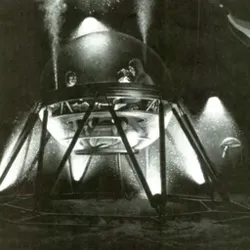which presents the obvious problem: if you have sealed games you’re hoping will increase in value over time, these could potentially become unplayable at some point.
It doesn’t matter what’s in the sealed box…
Because after a certain point opening the box ruins it as a collectible.
It matters if you value it less as a collectible and more as a preserved, playable copy.
You can just pirate a dump of the game and flash it on if you want to actually play it.
And within 5-10 years, no one is buying it to play…
It’s a moot point.
If the original buyer bought to play, they wouldn’t wait so long the cart goes bad.
And after 5-10 years there’s no reason to overpay for a sealed copy to play.
It’s a cognitive dissonance thing for collectors. They want the preserved, playable copy but they don’t ever want to break the seal because that lowers the value.
I bet there are a bunch of collectors out there in possession of empty game boxes (with placebo weights) that have been expertly resealed and then submitted to grading companies for a seal of approval.
I honestly wonder about this. What will collectors value be for sealed items in 50 years when the game inside is almost certainly useless?
I don’t think collectors who buy sealed items ever intend to ooen it up, tbh
The same as for a comic book that hasn’t left it’s rated sleeve in 30 years, and never will again without ruining the value.
It doesn’t matter what happens after you open it, if no one is going to open it.
The value remains unchanged because long before degradation comes into play, what people are buying is the rarity.
Wait what’s the risk if they don’t?
You plug the card in, the data has degraded to the point of unusability, and the game doesn’t function anymore.
“Card Inserted.”
“It has been 11 years since this card has been inserted.”
"Deleting data…”
“and banning your account”
It’s a good thing all of my games are on MicroSD cards!
Edit: OH it literally says physical collectors. I am a dumb.
What about old gameboy and NES/SNES carts? Are they made differently, or also subject to whatever issue? The article really didn’t say, but idk if those older carts are the same sort of flash or whatever, I mean they are like 40 years old at this point.
Didn’t those have a battery in them?
Yes. Most original NES, SNES, and Gameboy cartridges have probably lost their saved data by now, but the batteries can be replaced relatively easily. If I remember right, they’re a standard type, like the ones used for watches or hearing aids.
I know that some my old NES games retained their data at least into the 2000s. Been a while since I pulled them out and checked.
Edit: I realize this article is talking about the game data, not save data. I don’t know what type of memory older games used for the ROM or if it needs periodic power. I think the batteries were only for the writeable save data.
There’s some variety, but it’s either a 1616, 2025, or 2032. I believe they’re all 3V.
The numbers represent the physical size. 1616 is 16mm in diameter and 1.6mm thick.
I didn’t realize this before looking it up just now, but they’re interchangeable, as long as you can get the battery to physically fit (and watch out for surprise voltage exceptions).
Games in that era used mask ROM for the game data, so they don’t lose state over time as quickly as NAND flash does without power.
I say “as quickly” because I’m sure mask ROM still degrades eventually, but I’m not sure how long it takes.
The batteries in Game Boy carts were for keeping the save data SRAM powered. If that battery dies you’ll lose any data on the save RAM, but it doesn’t affect the mask ROM.
Sharing helps avoid data loss
Collaborative Data redundancy
NAND can hold data only so long without power being applied. This is why it’s useful to a), plug-in NAND based devices like some cartridges, SSDs, USB keys etc and b) why you should always have backups on different technologies.
Reason number 1,000,000 why we should backup our games. And any companies who say otherwise cough Nintendo cough should not be allowed to shut down archival and backup projects.
Also use something like Balena Etcher to keep an image handy - Have an nbernic with 16k games on it and what a pain it would be to go and reassemble all that.
Simply powering up the SSD on occasion does not help. SSDs get slower over time, the parts of the SSD hosting the operating system mostly gets read, not written, and those sectors degrade, slowing down the computer. At least in the Windows world reinstalling Windows speeds up the computer for this reason.
https://mstdn.social/@paulc/114517758255971698
Head’s up.










